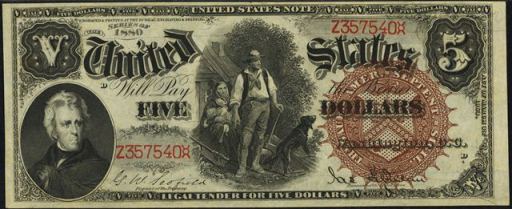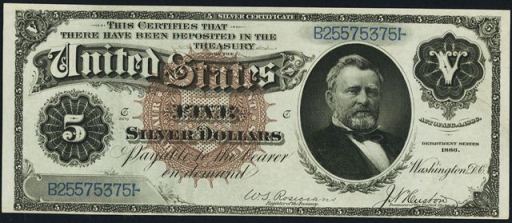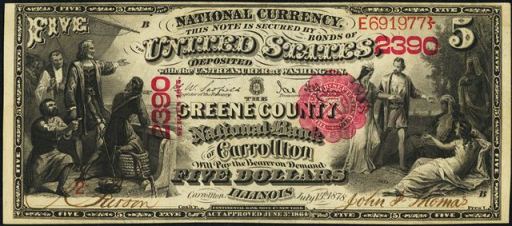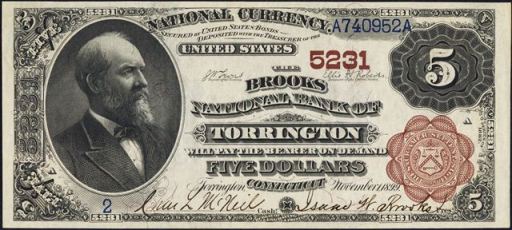There were three different types of five dollar bills being printed during the 1880s in the United States. The types were legal tenders, silver certificates, and two different national bank note designs.
The legal tender notes that you will find from the 1880s actually say Series of 1880 on them. These are typically known as wood chopper notes by collectors. They come in several different signature combination, seal types, and serial number colors. All of those factors are important when trying to determine the value.

Perhaps the most iconic old five dollar bill from the 1880s is the Series of 1886 $5 silver certificate. 1886 marks the first year that the silver certificate was printed for the five dollar denomination. Collectors often call these Morgan back dollars because there are coins on the back of each bill. These five dollar bills are not exceptionally rare, but they can be very valuable, especially in high grades.

There were two types of national bank notes that were printed in the 1880s. The first one pictured below is known as a Series of 1875 first charter five dollar national bank note. However, it could also have the year 1880 or 1881 printed on it. Those notes can be very rare based on their condition and their bank of issue.

The second type of five dollar national bank note from the 1880s is known as a Series of 1882 $5 brown back national bank note. These of course have 1882 printed on them, but they can also have 1883, 1884, 1885, 1886, 1887, 1888, or 1889 as the charter date. These notes feature a portrait of James Garfield. The five dollar denomination can have all different types of layouts and designs. The serial number, issuing bank, and condition all affect the value when dealing with notes from the series of 1882.

Now that you have an overview of old five dollar bills, contact us to get the exact value of your bill. We are available via email at Sales@AntiqueMoney.com


